Is it difficult to take care of Haworthia at home?
Under the scorching rays of the merciless African sun, the earth cracks and stones burst. It seems that the unbearable heat is killing all living things around. But that was not the case: the sandy silence and grayness of the rocky crevices enliven the colored stars of Haworthia. Nature has endowed this miniature plant with amazing vitality and taught it to adapt even to the most severe circumstances. I wonder how an exotic beauty feels in the comfortable conditions of a city apartment, and how difficult is caring for Hawortia? Let's try to figure it out.
What does a stranger look like?
In the arid desert regions of South Africa, where our exotic beauty comes from, only special plants - succulents can survive. Their shape, color and structure are completely determined by the extreme environmental conditions. The perennial herbaceous member of the asphodelic haworthia family is no exception.
- Its stem is short or completely absent - the short stature (up to 15 cm) of the plant reduces the area of evaporation and saves moisture.
- The swollen, fleshy leaves, collected in rosettes, are covered with small protruding growths that act as gutters, directing rainwater to the root of the plant.
- In some species, the leaves are covered with cilia, which protect the surface from sunburn and serve to collect condensation.
- The branched horizontal root system allows moisture to be collected from the surface without sinking into sand or rocky ground.
- Special pigments that protect against ultraviolet radiation give this species different shades, from pale blue to reddish brown.
- The plant is protected from small animals by poisonous sap, but it does not pose a threat to humans.
- Flowers - small and inconspicuous, located on a very long and thin peduncle.
Advice
Haworthia is grown because of the beauty of the leaves, and flowers that are not of great decorative value are usually cut off, preserving the strength of the plant.
An interesting fact is that during extreme heat or drought, the Haworthia trigger a self-preservation mechanism, entering the so-called dormant period. When the roots begin to dry out, the plants almost completely go underground, leaving only "windows" on the surface - translucent areas on the leaves, through which light and heat, necessary for photosynthesis, enter.
Plant species
The plant got its name thanks to the famous English botanist Adrian Haworth, who discovered the African beauty to the world in the 18th century. A lot of time has passed since then, about 150 new varieties were discovered in nature and bred thanks to the efforts of breeders.
The most popular among lovers of indoor flowers are the following varieties of Haworthia.
- Striped (Haworthia fasciata) - the most frequent guest in our homes. Volumetric white dots covering the leaf plate create beautiful stripes. The rosette is quite large for succulents - it reaches a size of 15 centimeters.
- Pearl (Haworthia margaritifera) - its leaves are covered with large snow-white growths, resembling pearls, and are surrounded by serious protection - rather dense, short thorns. Interestingly, the plant's flower is not white, as usual, but with a delicate green tint.
- Chess (mosaic) (Haworthia reticulata) - thick convex leaves, bordered with small teeth and covered with a mesh pattern, grow in a spiral, resembling a fantastic flower.
- Marginata (Haworthia marginata) - is distinguished by an unusually beautiful rosette of leaves: unnaturally shiny, similar to plastic, they play with color, smoothly changing the light shade in the center to a dark and very saturated one at the edges.
- Arachnoid (Haworthia arachnoidea) - thin long cilia completely entwine the leaf plate, making it look like a white fluffy pompom from a baby hat.
- Dwarf (Haworthia pygmaea) - centimeter rough leaves are collected in a fancy round rosette.
- Atrofusca (Haworthia atrofusca) - a plant of an exotic reddish hue, which becomes translucent in bright light.
- Cooper (Haworthia Cooperi) - light round leaves with transparent veins-windows form a rosette. Long villi along the edge form a kind of dense fringe.
Advice
The striped haworthia is often confused with aloe. It can be distinguished by the absence of antennae and the presence of a rough pattern on the outside of the leaf plate, while in aloe the leaf will be smooth on both sides.
Home content
In the homeland of Haworthia, in the African desert, during the day the air temperature reaches + 70 0C, and at night it can drop to +100C and below. The plant hides from the deadly sunlight in the shade of stones, crevices or under dry bushes. Precipitation is rare and scarce here. Rain drops often dry up in the air before they hit the ground.
Dry air and soil are a familiar state for an exotic beauty. Therefore, at home, she does not change her preferences:
- feels better in a warm room (the optimal temperature in summer is + 25-280FROM);
- not afraid of the winter temperature drop to +100FROM;
- requires good illumination, but does not tolerate direct sunlight;
- quietly dispenses with air humidification and spraying;
- will be grateful for regular ventilation, but without drafts.
Advice
Place the Hawortia pot on the east or south side of the apartment. In summer, it can be taken out to an open balcony, and in winter, when the state of rest comes, put in a well-lit cool place. Blackness on the leaves is the first sign of freezing of the plant.
Watering rules and feeding
How to care for a flower that is not adapted to high humidity conditions? In order not to harm the plant, it is worth adhering to some simple rules.
- In the summer, water the flower once a week. Make sure that the soil is completely dry between waterings. Its condition can be checked with a probe or determined by the shade of the drainage through the holes in the bottom.
- In winter, reduce watering to twice a month.
- Water in a thin stream, making sure that no water gets into the center of the leaf outlet to avoid rotting the plant. A regular syringe is often used to water the smallest plants.
- Use only settled soft water at room temperature. Due to hard water, a specific gray bloom may appear on the lower leaves.
- Excess moisture must be drained from the pallet.
During the growing season, the plant needs feeding. To do this, once a month, it is worth fertilizing the soil with any means for cacti, adding it to the water for irrigation. In this case, the concentration indicated on the package must be halved. In the autumn-winter period of rest, the succulent does not need feeding.
Reproduction methods
There are never many miniature haworthias, especially if you are passionate about drawing up decorative compositions. Therefore, many growers are engaged in plant propagation at home, especially since this is not at all difficult to do.
The first method of reproduction is with the help of side rosettes, which are called cuttings.
- We take out the mother plant from the ground.
- Cut the cuttings carefully.
- Immediately plant the shoot with the root in moist soil.
The second way is to use sheet plates.
- We cut off the sheet with a sharp knife or break it off with our hands, pulling it to the side.
- Sprinkle the cut with crushed activated carbon or wood ash.
- We leave the workpiece for 2-3 days to dry in a dry and well-ventilated area.
- Then we place it in wet sand until rooting, after which we transfer the sprout to the ground.
Advice
The roots will appear after 3-4 weeks. All this time, you cannot water the leaf cutting.
You can buy Haworthia seeds at any flower shop. But reproduction with their help is a very long and laborious process. Florists use it only to grow some rare and inaccessible kind of indoor plant.
Succulent transplant
With proper care, Haworthias live for a very long time: from five to twenty years. Naturally, during this time it will be necessary to transplant the plant several times:
- For a young bush, this procedure should become an annual one, since it is during this period that the root system is actively growing.
- Adult plants change the soil as it depletes - once every two to three years.
- An emergency haworthia transplant is carried out with signs of root decay.
Before transplanting, you need to do a little preparatory work.
- Choose a pot for a succulent, taking into account the structure of the root system. It is better if it is a small ceramic container, shallow, but wide enough. Keep in mind that this flower does better in somewhat cramped conditions.
Advice
Do not choose square containers - they create conditions for the roots to bend at right angles, which leads to their cracking and decay.
- Prepare the ground. You can use ready-made soil for cacti or succulents or prepare the substrate yourself by mixing sod and leafy soil, peat, humus, sand. The mixture should be loose, permeable and dry quickly.
Now you can start transplanting the plant.
- At the bottom of the pot, it is imperative to lay drainage in the form of expanded clay, small pebbles or broken tiles.
- Sprinkle the substrate with a thin layer on top.
- Remove the succulent from the old pot, shake off the old soil.
- Examine roots for decay. Cut off suspicious areas with a sharp blade.
- Place the haworthia in a new container, sprinkle a layer of substrate on top, without compacting it.
- Moisten slightly.
Advice
A thin top layer of small pebbles will protect the lower leaves of the succulent from contact with wet soil.
What should be alarming?
Havorthia hardened by the hot African sun rarely get sick. A change in the appearance of a flower, a suspension of its growth and even death, most often causes improper care during flowering and dormancy.
- If the leaves wither and soften, move the haworthia to a bright, but slightly shaded place.
- Curl and darken at the tips - move the pot to a warmer place and protect it from drafts.
- Turn red or yellow - stop feeding. Excess fertilizer causes discoloration.
- Darkening or wrinkling is the first sign of sunburn. Protect your succulent plant from direct sunlight.
- Become watery, turn black and rot - stop watering for 2 weeks until the soil dries out.
The danger to the life of the plant also arises in the case of infection by parasites. The mealybug is especially harmful - large, up to 5mm, white insects, as if covered with powdery dust, can completely destroy the root system in a few weeks. Therefore, at the first signs of damage, it is necessary to remove the sick Hawortia from the ground and place it in an insecticide solution for several minutes. Then completely replace the soil.
They say that Haworthia grows slowly because it gives all its strength and energy to protect the health and well-being of its owner. So let us be attentive to a small and selfless plant that delights and protects us with its exotic beauty.
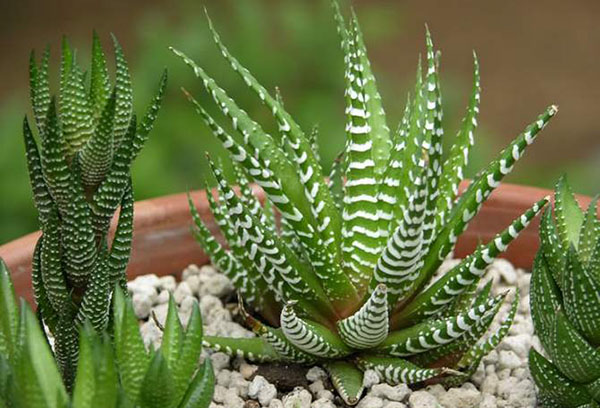
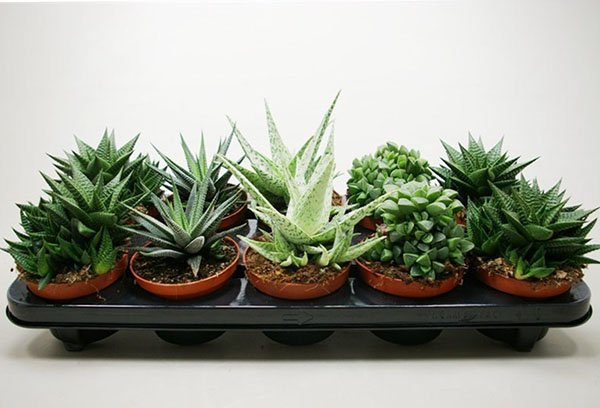
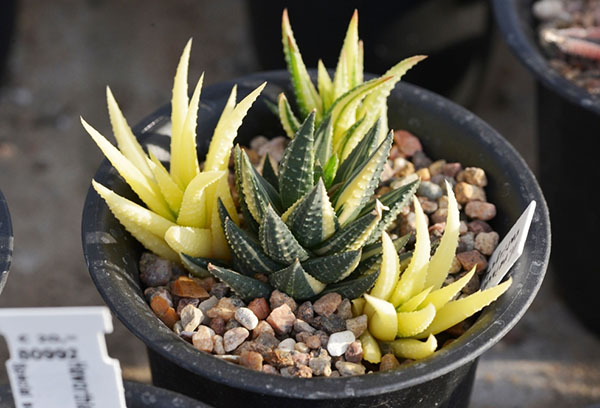
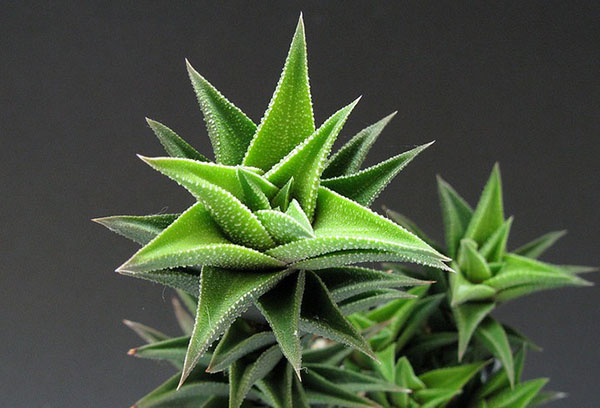
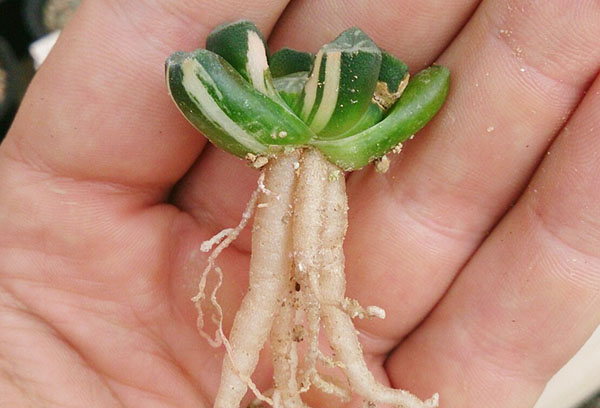
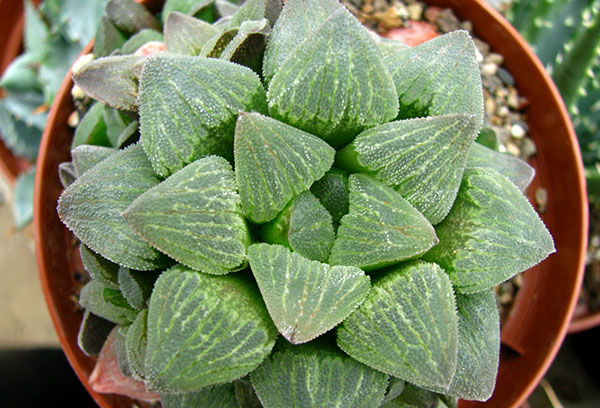
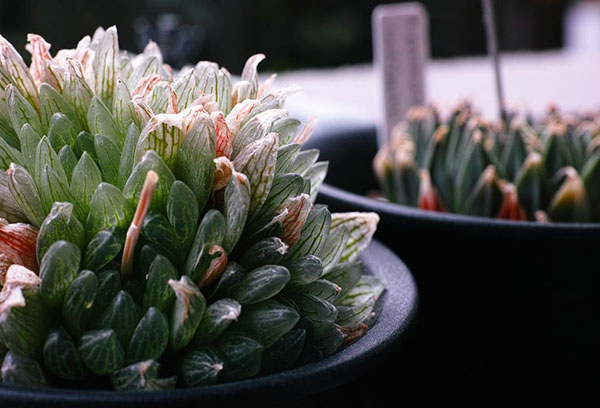
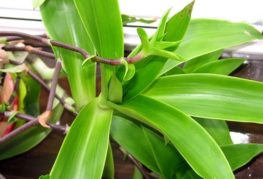
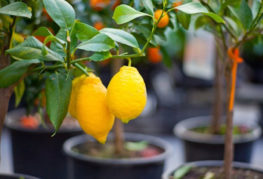
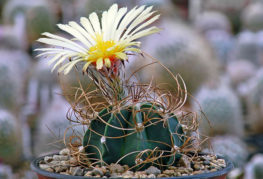
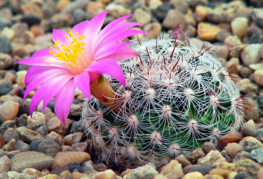
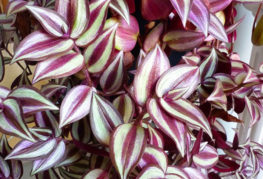
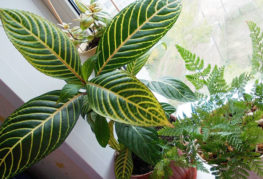
and will be published shortly.